Christopher Leckie
AUDETER: A Large-scale Dataset for Deepfake Audio Detection in Open Worlds
Sep 04, 2025



Abstract:Speech generation systems can produce remarkably realistic vocalisations that are often indistinguishable from human speech, posing significant authenticity challenges. Although numerous deepfake detection methods have been developed, their effectiveness in real-world environments remains unrealiable due to the domain shift between training and test samples arising from diverse human speech and fast evolving speech synthesis systems. This is not adequately addressed by current datasets, which lack real-world application challenges with diverse and up-to-date audios in both real and deep-fake categories. To fill this gap, we introduce AUDETER (AUdio DEepfake TEst Range), a large-scale, highly diverse deepfake audio dataset for comprehensive evaluation and robust development of generalised models for deepfake audio detection. It consists of over 4,500 hours of synthetic audio generated by 11 recent TTS models and 10 vocoders with a broad range of TTS/vocoder patterns, totalling 3 million audio clips, making it the largest deepfake audio dataset by scale. Through extensive experiments with AUDETER, we reveal that i) state-of-the-art (SOTA) methods trained on existing datasets struggle to generalise to novel deepfake audio samples and suffer from high false positive rates on unseen human voice, underscoring the need for a comprehensive dataset; and ii) these methods trained on AUDETER achieve highly generalised detection performance and significantly reduce detection error rate by 44.1% to 51.6%, achieving an error rate of only 4.17% on diverse cross-domain samples in the popular In-the-Wild dataset, paving the way for training generalist deepfake audio detectors. AUDETER is available on GitHub.
EMMM, Explain Me My Model! Explainable Machine Generated Text Detection in Dialogues
Aug 26, 2025Abstract:The rapid adoption of large language models (LLMs) in customer service introduces new risks, as malicious actors can exploit them to conduct large-scale user impersonation through machine-generated text (MGT). Current MGT detection methods often struggle in online conversational settings, reducing the reliability and interpretability essential for trustworthy AI deployment. In customer service scenarios where operators are typically non-expert users, explanation become crucial for trustworthy MGT detection. In this paper, we propose EMMM, an explanation-then-detection framework that balances latency, accuracy, and non-expert-oriented interpretability. Experimental results demonstrate that EMMM provides explanations accessible to non-expert users, with 70\% of human evaluators preferring its outputs, while achieving competitive accuracy compared to state-of-the-art models and maintaining low latency, generating outputs within 1 second. Our code and dataset are open-sourced at https://github.com/AngieYYF/EMMM-explainable-chatbot-detection.
SPADE: Systematic Prompt Framework for Automated Dialogue Expansion in Machine-Generated Text Detection
Mar 19, 2025Abstract:The increasing capability of large language models (LLMs) to generate synthetic content has heightened concerns about their misuse, driving the development of Machine-Generated Text (MGT) detection models. However, these detectors face significant challenges due to the lack of systematically generated, high-quality datasets for training. To address this issue, we propose five novel data augmentation frameworks for synthetic user dialogue generation through a structured prompting approach, reducing the costs associated with traditional data collection methods. Our proposed method yields 14 new dialogue datasets, which we benchmark against seven MGT detection models. The results demonstrate improved generalization performance when utilizing a mixed dataset produced by our proposed augmentation framework. Furthermore, considering that real-world agents lack knowledge of future opponent utterances, we simulate online dialogue detection and examine the relationship between chat history length and detection accuracy. We also benchmark online detection performance with limited chat history on our frameworks. Our open-source datasets can be downloaded from https://github.com/AngieYYF/SPADE-customer-service-dialogue.
CURVALID: Geometrically-guided Adversarial Prompt Detection
Mar 05, 2025Abstract:Adversarial prompts capable of jailbreaking large language models (LLMs) and inducing undesirable behaviours pose a significant obstacle to their safe deployment. Current mitigation strategies rely on activating built-in defence mechanisms or fine-tuning the LLMs, but the fundamental distinctions between adversarial and benign prompts are yet to be understood. In this work, we introduce CurvaLID, a novel defense framework that efficiently detects adversarial prompts by leveraging their geometric properties. It is agnostic to the type of LLM, offering a unified detection framework across diverse adversarial prompts and LLM architectures. CurvaLID builds on the geometric analysis of text prompts to uncover their underlying differences. We theoretically extend the concept of curvature via the Whewell equation into an $n$-dimensional word embedding space, enabling us to quantify local geometric properties, including semantic shifts and curvature in the underlying manifolds. Additionally, we employ Local Intrinsic Dimensionality (LID) to capture geometric features of text prompts within adversarial subspaces. Our findings reveal that adversarial prompts differ fundamentally from benign prompts in terms of their geometric characteristics. Our results demonstrate that CurvaLID delivers superior detection and rejection of adversarial queries, paving the way for safer LLM deployment. The source code can be found at https://github.com/Cancanxxx/CurvaLID
HALO: Robust Out-of-Distribution Detection via Joint Optimisation
Feb 27, 2025Abstract:Effective out-of-distribution (OOD) detection is crucial for the safe deployment of machine learning models in real-world scenarios. However, recent work has shown that OOD detection methods are vulnerable to adversarial attacks, potentially leading to critical failures in high-stakes applications. This discovery has motivated work on robust OOD detection methods that are capable of maintaining performance under various attack settings. Prior approaches have made progress on this problem but face a number of limitations: often only exhibiting robustness to attacks on OOD data or failing to maintain strong clean performance. In this work, we adapt an existing robust classification framework, TRADES, extending it to the problem of robust OOD detection and discovering a novel objective function. Recognising the critical importance of a strong clean/robust trade-off for OOD detection, we introduce an additional loss term which boosts classification and detection performance. Our approach, called HALO (Helper-based AdversariaL OOD detection), surpasses existing methods and achieves state-of-the-art performance across a number of datasets and attack settings. Extensive experiments demonstrate an average AUROC improvement of 3.15 in clean settings and 7.07 under adversarial attacks when compared to the next best method. Furthermore, HALO exhibits resistance to transferred attacks, offers tuneable performance through hyperparameter selection, and is compatible with existing OOD detection frameworks out-of-the-box, leaving open the possibility of future performance gains. Code is available at: https://github.com/hugo0076/HALO
GreedyPixel: Fine-Grained Black-Box Adversarial Attack Via Greedy Algorithm
Jan 24, 2025Abstract:A critical requirement for deep learning models is ensuring their robustness against adversarial attacks. These attacks commonly introduce noticeable perturbations, compromising the visual fidelity of adversarial examples. Another key challenge is that while white-box algorithms can generate effective adversarial perturbations, they require access to the model gradients, limiting their practicality in many real-world scenarios. Existing attack mechanisms struggle to achieve similar efficacy without access to these gradients. In this paper, we introduce GreedyPixel, a novel pixel-wise greedy algorithm designed to generate high-quality adversarial examples using only query-based feedback from the target model. GreedyPixel improves computational efficiency in what is typically a brute-force process by perturbing individual pixels in sequence, guided by a pixel-wise priority map. This priority map is constructed by ranking gradients obtained from a surrogate model, providing a structured path for perturbation. Our results demonstrate that GreedyPixel achieves attack success rates comparable to white-box methods without the need for gradient information, and surpasses existing algorithms in black-box settings, offering higher success rates, reduced computational time, and imperceptible perturbations. These findings underscore the advantages of GreedyPixel in terms of attack efficacy, time efficiency, and visual quality.
Long-term Fairness in Ride-Hailing Platform
Jul 25, 2024



Abstract:Matching in two-sided markets such as ride-hailing has recently received significant attention. However, existing studies on ride-hailing mainly focus on optimising efficiency, and fairness issues in ride-hailing have been neglected. Fairness issues in ride-hailing, including significant earning differences between drivers and variance of passenger waiting times among different locations, have potential impacts on economic and ethical aspects. The recent studies that focus on fairness in ride-hailing exploit traditional optimisation methods and the Markov Decision Process to balance efficiency and fairness. However, there are several issues in these existing studies, such as myopic short-term decision-making from traditional optimisation and instability of fairness in a comparably longer horizon from both traditional optimisation and Markov Decision Process-based methods. To address these issues, we propose a dynamic Markov Decision Process model to alleviate fairness issues currently faced by ride-hailing, and seek a balance between efficiency and fairness, with two distinct characteristics: (i) a prediction module to predict the number of requests that will be raised in the future from different locations to allow the proposed method to consider long-term fairness based on the whole timeline instead of consider fairness only based on historical and current data patterns; (ii) a customised scalarisation function for multi-objective multi-agent Q Learning that aims to balance efficiency and fairness. Extensive experiments on a publicly available real-world dataset demonstrate that our proposed method outperforms existing state-of-the-art methods.
Round Trip Translation Defence against Large Language Model Jailbreaking Attacks
Feb 21, 2024Abstract:Large language models (LLMs) are susceptible to social-engineered attacks that are human-interpretable but require a high level of comprehension for LLMs to counteract. Existing defensive measures can only mitigate less than half of these attacks at most. To address this issue, we propose the Round Trip Translation (RTT) method, the first algorithm specifically designed to defend against social-engineered attacks on LLMs. RTT paraphrases the adversarial prompt and generalizes the idea conveyed, making it easier for LLMs to detect induced harmful behavior. This method is versatile, lightweight, and transferrable to different LLMs. Our defense successfully mitigated over 70% of Prompt Automatic Iterative Refinement (PAIR) attacks, which is currently the most effective defense to the best of our knowledge. We are also the first to attempt mitigating the MathsAttack and reduced its attack success rate by almost 40%. Our code is publicly available at https://github.com/Cancanxxx/Round_Trip_Translation_Defence
Be Persistent: Towards a Unified Solution for Mitigating Shortcuts in Deep Learning
Feb 17, 2024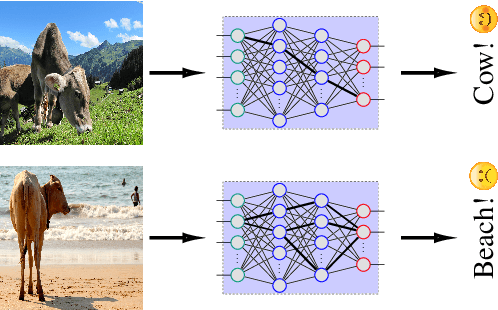
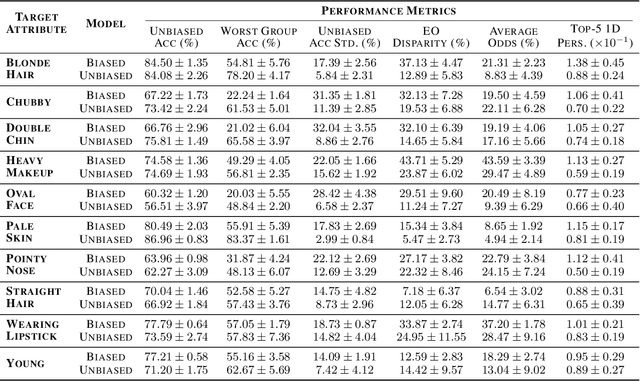
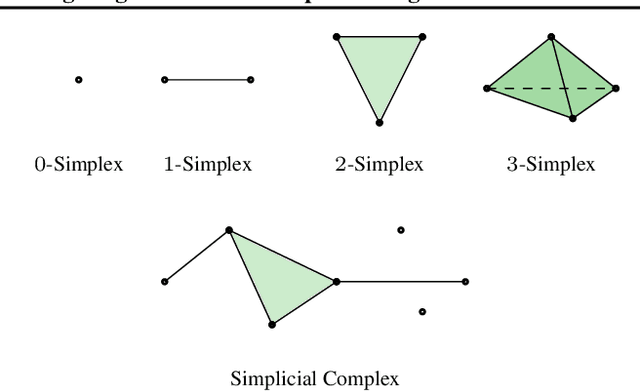
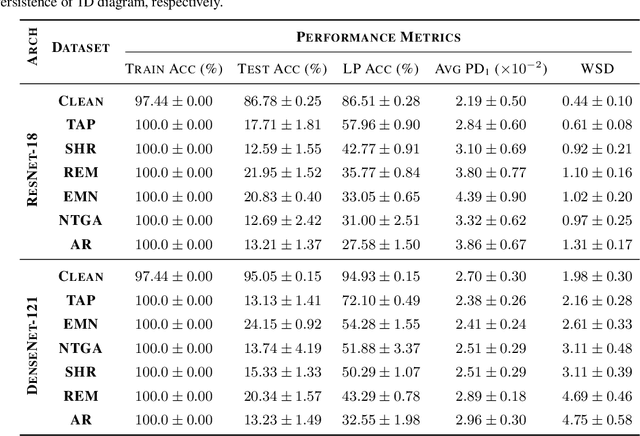
Abstract:Deep neural networks (DNNs) are vulnerable to shortcut learning: rather than learning the intended task, they tend to draw inconclusive relationships between their inputs and outputs. Shortcut learning is ubiquitous among many failure cases of neural networks, and traces of this phenomenon can be seen in their generalizability issues, domain shift, adversarial vulnerability, and even bias towards majority groups. In this paper, we argue that this commonality in the cause of various DNN issues creates a significant opportunity that should be leveraged to find a unified solution for shortcut learning. To this end, we outline the recent advances in topological data analysis~(TDA), and persistent homology~(PH) in particular, to sketch a unified roadmap for detecting shortcuts in deep learning. We demonstrate our arguments by investigating the topological features of computational graphs in DNNs using two cases of unlearnable examples and bias in decision-making as our test studies. Our analysis of these two failure cases of DNNs reveals that finding a unified solution for shortcut learning in DNNs is not out of reach, and TDA can play a significant role in forming such a framework.
An Interpretable Low-complexity Model for Wireless Channel Estimation
Feb 12, 2024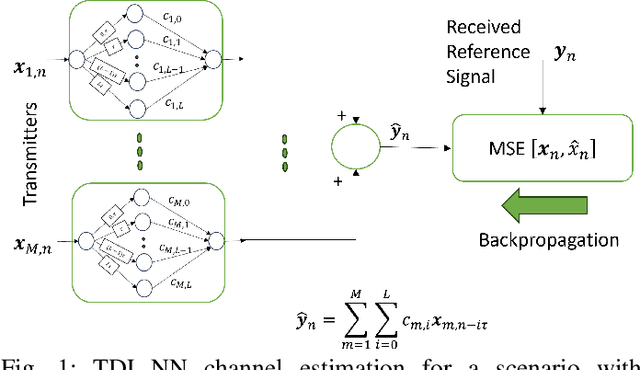
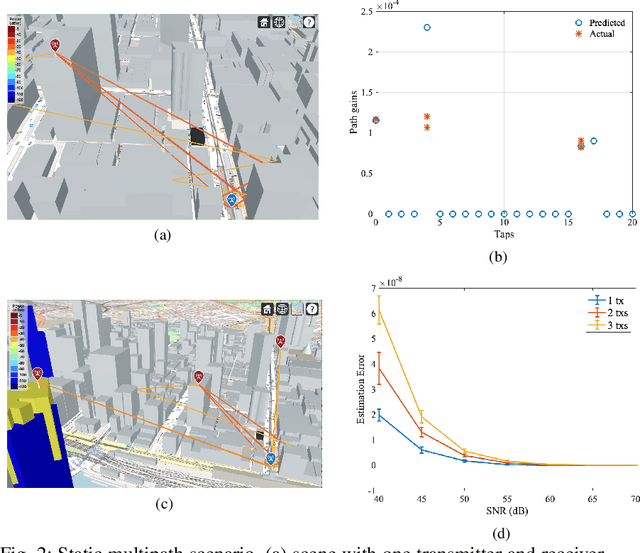

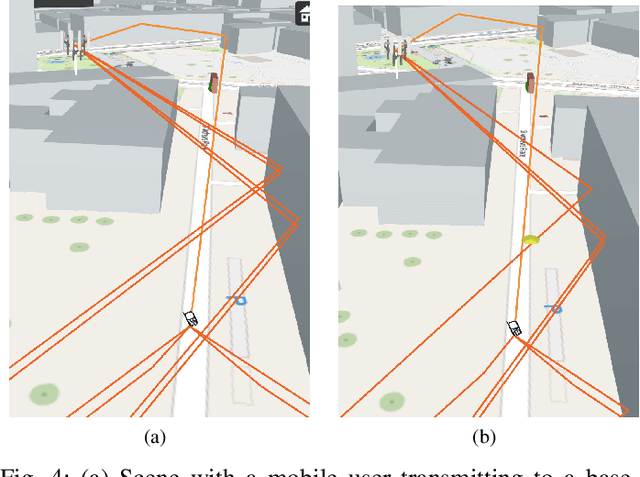
Abstract:With the advent of machine learning, there has been renewed interest in the problem of wireless channel estimation. This paper presents a novel low-complexity wireless channel estimation scheme based on a tapped delay line (TDL) model of wireless signal propagation, where a data-driven machine learning approach is used to estimate the path delays and gains. Advantages of this approach include low computation time and training data requirements, as well as interpretability since the estimated model parameters and their variance provide comprehensive representation of the dynamic wireless multipath environment. We evaluate this model's performance using Matlab's ray-tracing tool under static and dynamic conditions for increased realism instead of the standard evaluation approaches using statistical channel models. Our results show that our TDL-based model can accurately estimate the path delays and associated gains for a broad-range of locations and operating conditions. Root-mean-square estimation error remained less than $10^{-4}$, or $-40$dB, for SNR $\geq 30$dB in all of our experiments. The key motivation for the novel channel estimation model is to gain environment awareness, i.e., detecting changes in path delays and gains related to interesting objects and events in the field. The channel state with multipath delays and gains is a detailed measure to sense the field than the single-tap channel state indicator calculated in current OFDM systems.
 Add to Chrome
Add to Chrome Add to Firefox
Add to Firefox Add to Edge
Add to Edge